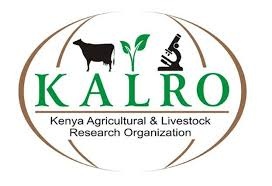Relevance of Research/ What are Mycotoxins and why is it an important issue?
Mycotoxins are toxic substances produced by fungi, commonly found in foods like cereals, nuts, dried fruits, and spices. They can cause health issues in humans and animals, including digestive problems, kidney damage, immune suppression, and even cancer. Mycotoxins contaminate food during fungal infections before or after harvest, especially in warm, humid conditions. Key mycotoxins of concern include aflatoxins, ochratoxin A, and Fusarium toxins. Climate change may affect their prevalence due to its impact on fungal growth. Most mycotoxins remain stable even after food processing.
For further Information, look up here:

Mycotoxins
Mycotoxins are toxic compounds that are naturally produced by certain types of moulds (fungi). Moulds that can produce mycotoxins grow on numerous foodstuffs such as cereals, dried fruits, nuts and spices. Mould growth can occur either before harvest or after harvest, during storage, on/in the food…
www.who.int

Mycotoxins
Mycotoxins are toxic compounds that are naturally produced by different types of fungi. Mycotoxins enter the food chain as a result of infection of crops before or after harvest and are typically found in foods such as cereals, dried fruits, nuts and spices.
The presence of mycotoxins in food and feed may cause adverse health effects in humans and animals, ranging from gastrointestinal and kidney disorders to immune deficiency and cancer.
The presence of mycotoxins in food and feed may cause adverse health effects in humans and animals, ranging from gastrointestinal and kidney disorders to immune deficiency and cancer.
www.efsa.europa.eu

Mycotoxins and human health risks. An overview. | KAINet
The history, mycology, chemistry and clinical symptoms of human health risks associated with mycotoxins are outlined for Amanita toxins, ergot alkaloids, pink rot disease (Sclerotinia sclerotiorum toxins), alimentary toxic aleukia (T-2 toxin), yellowed rice syndrome (Penicillium toxins) and Balkan nephropathy (ochratoxins). Aflatoxin poisoning is discussed in more detail with case reports of acute poisonings from Taiwan, Kenya, Uganda, Thailand, New Zealand, Czechoslovakia, USA and Germany. Possible associations with Indian hepatitis and childhood cirrhosis are considered and results of studies on aflatoxins and liver cancer in Uganda, Thailand, Mozambique, Kenya, Swaziland and the Philippines are summarized. Epidemiological studies associating aflatoxins with chemicals, hepatitis B virus, parasitic infections and other cancers are also mentioned.
www.kalro.org
The Need for Integrated Approaches to Address Food Safety Risk: The Case of Mycotoxins in Africa
Across Africa, staple crops notably maize and groundnuts as well as sorghum and millet are often heavily
contaminated with several mycotoxins produced by diverse fungi. This degree of contamination occurs due
to agronomic, sociological, climatic, and institutional challenges. Over the last 70 years, maize has largely
replaced sorghum, millet and cassava as source of calories in Africa (IARC 2015). Comprehensively
addressing these challenges has proven difficult. There is no silver bullet that will help to manage the
incidence and severity of mycotoxin contamination.
contaminated with several mycotoxins produced by diverse fungi. This degree of contamination occurs due
to agronomic, sociological, climatic, and institutional challenges. Over the last 70 years, maize has largely
replaced sorghum, millet and cassava as source of calories in Africa (IARC 2015). Comprehensively
addressing these challenges has proven difficult. There is no silver bullet that will help to manage the
incidence and severity of mycotoxin contamination.
www.fao.org